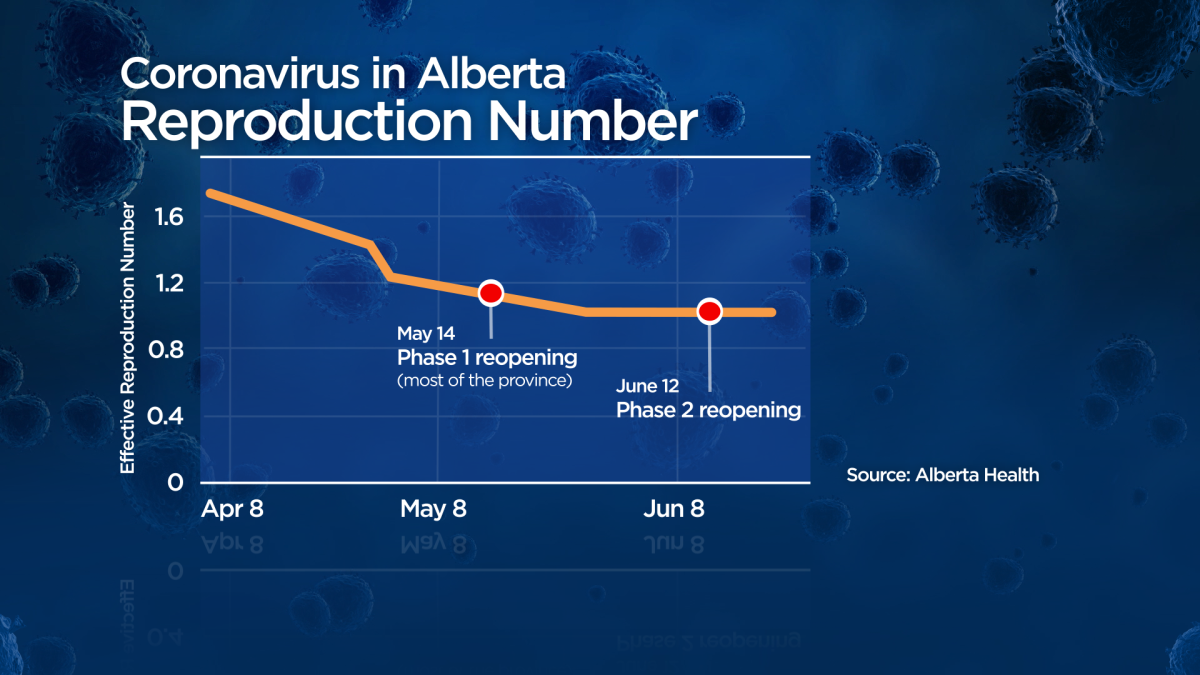The reproduction number, also known as R number and R value, of the coronavirus in Alberta has been dropping over the last few months and has been holding steady even after two different phases of reopening in the province.

However, experts say that isn’t cause for celebration quite yet, saying Albertans need to continue following public health measures.
READ MORE: What the coronavirus reproduction number is, and why we should keep an eye on it
The reproduction number explains, if one infected person is introduced into a community, how many secondary people would become infected.
For example, if the R number is one, one person infects one other person who then infects one other person. An R number of two means one person infects two others who go on to infect two others each. An R number of 0.5 means fewer people will become infected than the previous generation of cases. For example, 100 people would infect 50 people, who infect 25 people and so on and so forth.

In essence, a higher R number means more people can become infected, allowing faster spread of the disease than a smaller R number.
“If you want to overcome an epidemic, the lower the R is, the better news that is. To have an epidemic end, you want to work with an R below one,” said epidemiologist Paul Veugelers, who is a professor at the School of Public Health at the University of Alberta.
Numbers provided to Global News from Alberta Health show the R number in the province has been slowly falling:
- April 8 – 1.7
- April 28 – 1.4
- May 1 – 1.2
- May 26 – 1.0
- June 19 – 1.0
“R one, where we are currently, means we’re not on the track where the epidemic will end but the epidemic is also not growing,” Veugelers said.
The R number has fallen or remained steady even after the province moved into Phase 1 and Phase 2 of reopening, which fell on May 14 and June 12 respectively.
READ MORE: Coronavirus: Gyms, pools, indoor fitness can open June 12 for Stage 2 of Alberta relaunch
Veugelers said it’s worth a pat on the back that the R number hasn’t increased as the province reopened, but cautions it isn’t cause for celebration quite yet.
He said it is important for the R number to be continuously monitored and points to Germany, where some regions have brought back lockdown measures after seeing a rise in the R number.
READ MORE: Germany cautions coronavirus pandemic far from over as economies restart
“Once the R [number] is on the increase again, you need to turn around those loosening measures.”
The R number may be falling but Dr. Smith said Albertans need to continue being vigilant.
“The R [number] can fluctuate so it doesn’t mean we can completely stop doing all the things we’ve been doing that have actually led to the R [number] decreasing,” Dr. Smith said.
–with files from Patrick Cain






Comments